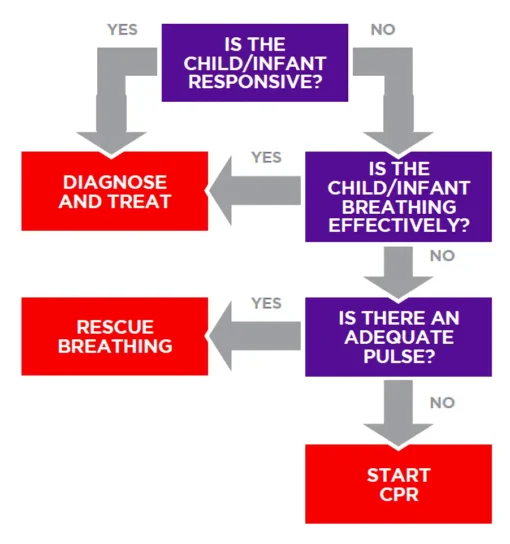Your cart is currently empty!
When you find an unresponsive child or infant, it is often not possible to immediately deduce the etiology. You will want to act quickly, decisively, and apply interventions that fit the needs of the individual at that moment. In order to achieve this, PALS was designed for providers to take a comprehensive approach.
While there are various causes for a child or an infant to become unresponsive, the central issues that need to be addressed include keeping blood pumping through the vasculature (perfusion) and supplying oxygen to the lungs (oxygenation). When the child or infant is experiencing poor perfusion and oxygenation, CPR manually takes over for the heart and lungs. If they are still adequately maintaining perfusion and oxygenation but are unresponsive, then rapid diagnosis and treatment may be possible without CPR.

It is important to differentiate normal breathing from gasping (agonal breathing). Gasping is considered ineffective breathing.
Likewise, not all pulses are adequate. The rule of thumb is that at least 60 beats per minute is required to maintain adequate perfusion in a child or an infant.
The assessment must be carried out quickly. There is a low threshold for administering ventilation and/or compressions if there is evidence that the child or infant cannot do either effectively on their own.
If the problem is respiratory in nature (ineffective breathing with adequate pulses), then initiation of rescue breathing is warranted. If breathing is ineffective and pulses are inadequate, begin high-quality CPR immediately. It is important to understand that any case can change at any time, so you must reevaluate periodically and adjust the approach to treatment accordingly. Use CPR to support breathing and circulation until the cause has been identified and effectively